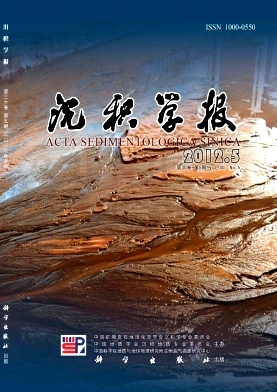Variations of the Magnetic Susceptibility across the PT Boundary at Xinmin Section in Anshun, Guizhou and Their Paleoclimatic Implications
- Publish Date: 2012-10-10
-
Key words:
- magnetic susceptibility /
- geochemistry /
- palynology /
- paleoclimate /
- PermianTriassic boundary /
- South China /
- /
- /
- /
- /
- /
- /
Abstract: Magnetic susceptibility results from Xinmin section in Anshun, Guizhou indicate that the Permian Dalong Formation is with low values(6.4×108 m3/kg in average) and that their values increase significantly across the PT boundary and are high, about 1.3×107 m3/kg, in the Triassic Luolou Formation, which shows the same variation trend with that across other PT boundary sections in South China. A good positive correlation with both terrestrial sporopollen abundance and TiO2 variations proves that terrestrial influx attributes most of the magnetic susceptibility at Xinmin section. 3 paleoclimatic stages in the source area were figured out based on the variations of magnetic susceptibility and geochemical climatic proxies: StageⅠ(bed 1 to the middle of bed 2) is characterized by a warm/humid climate with strong chemical weathering; while a hot/humid climate with stronger chemical weathering dominates stageⅡ(top of bed 2 to the PT boundary), the climate condition change rapidly between much milder climate and humid climate; after a short transitional period, the climate in stageⅢ(above the PT boundary) turns into a relatively hot/dry climate with obvious much stronger physical weathering and weaker chemical weathering.
| Citation: | Variations of the Magnetic Susceptibility across the PT Boundary at Xinmin Section in Anshun, Guizhou and Their Paleoclimatic Implications[J]. Acta Sedimentologica Sinica, 2012, 30(5): 817-824. |






 DownLoad:
DownLoad: